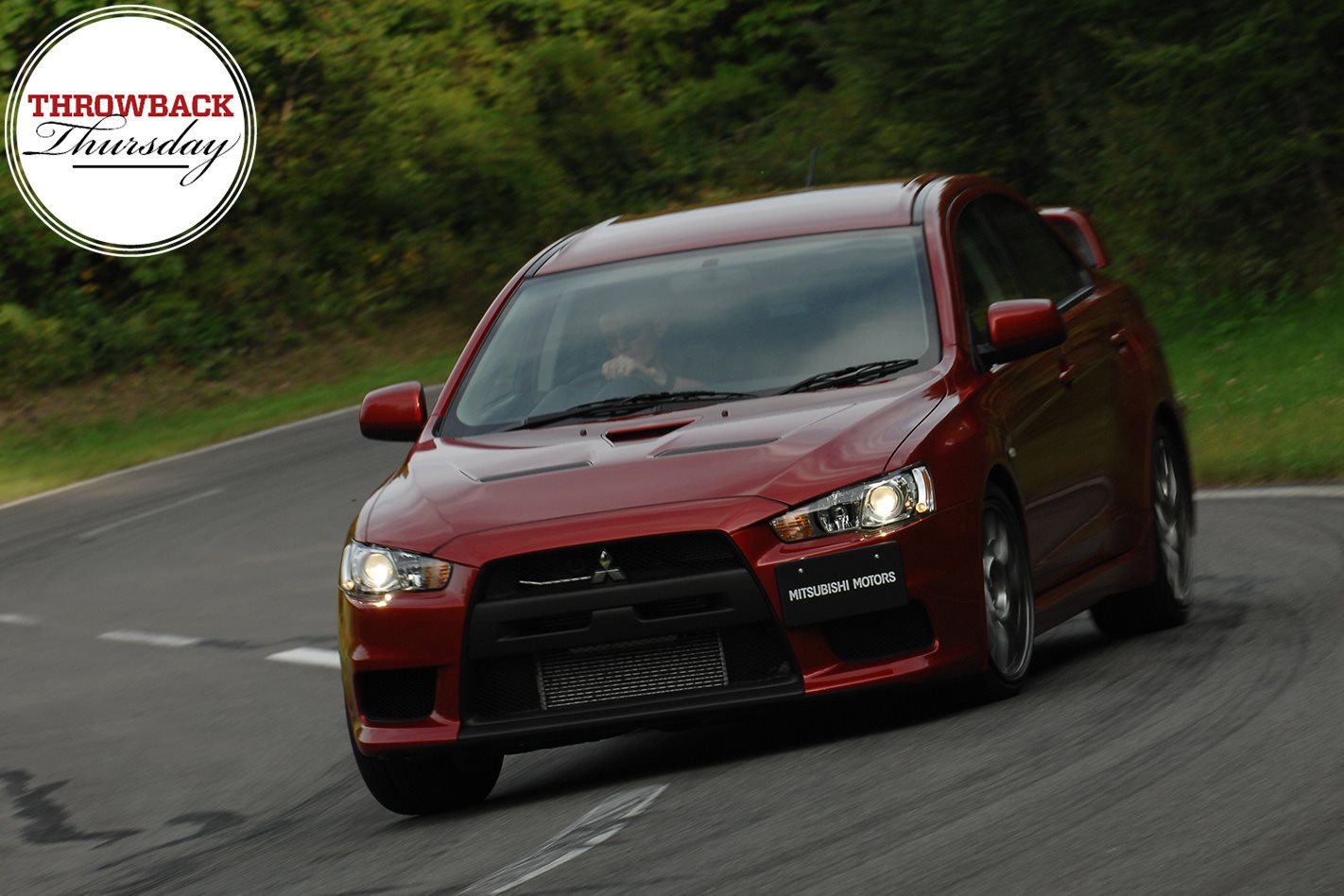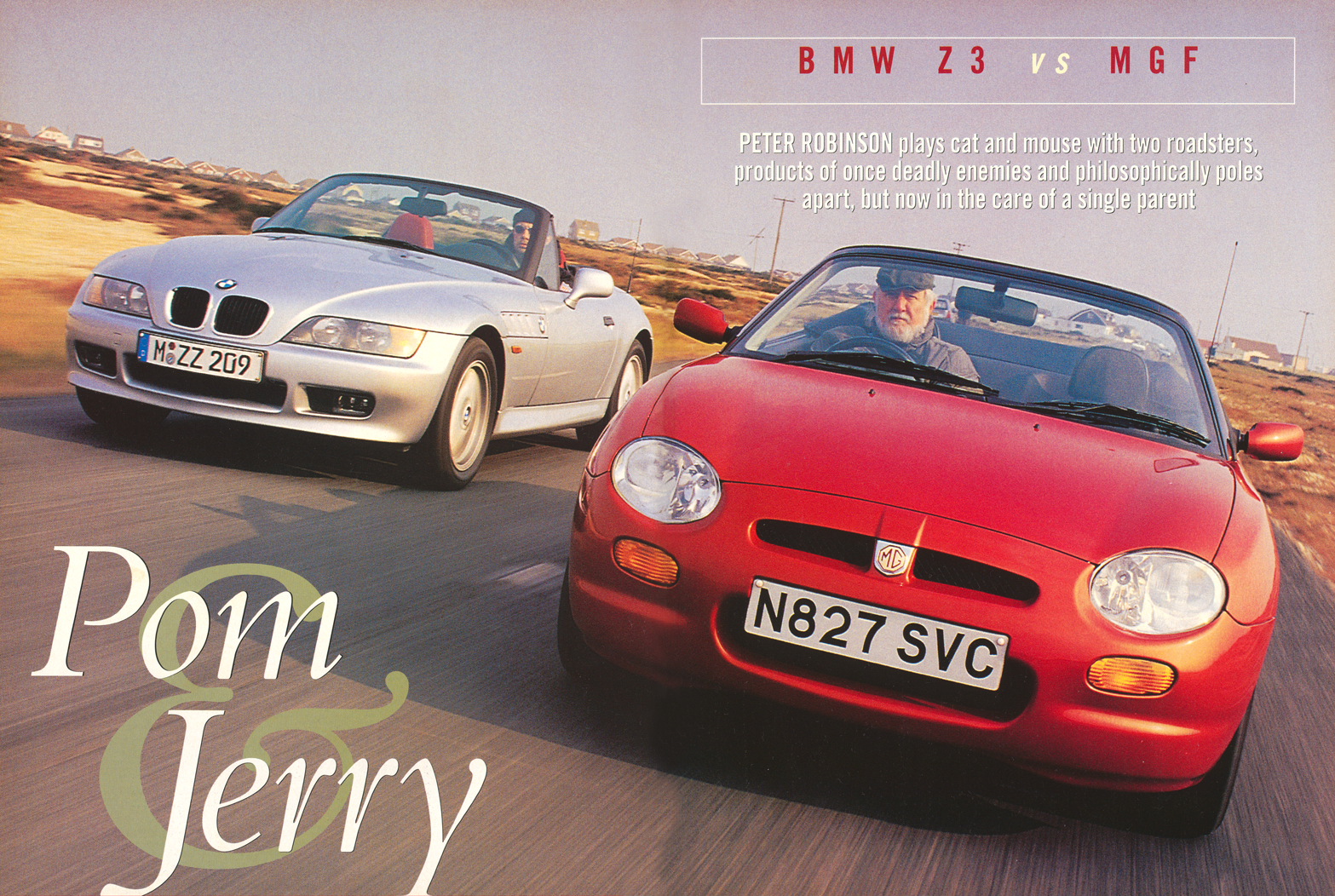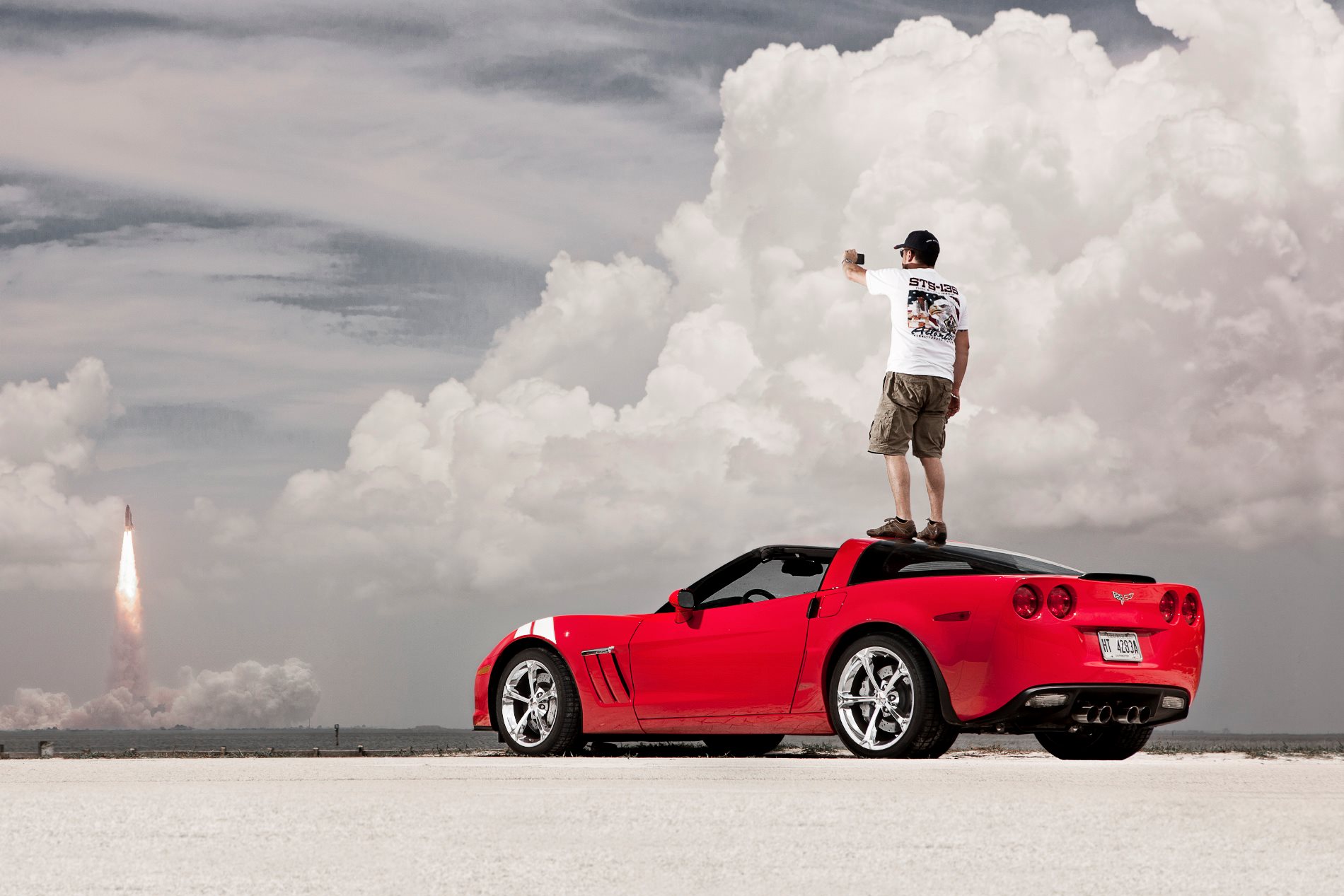THE 10th incarnation of Mitsubishi’s iconic AWD hero is pitted here against the company’s demanding proving ground road loop … with no prisoners required.
First published in the November 2007 issue of Wheels magazine, Australia’s best car mag since 1953.
THERE’S a crackle of Japanese from the two-way radio in the left hand of the safety marshal. With a flourish of the long light wand in his right, he signals ‘Go’. Our own little piece of Mitsubishi’s vast Tokachi Proving Ground, on Japan’s big northern island of Hokkaido, is clear and open for business. Despite its ‘Cross-Country Track’ designation, this circuit duplicates a sinuous, bitumen-covered mountain road.
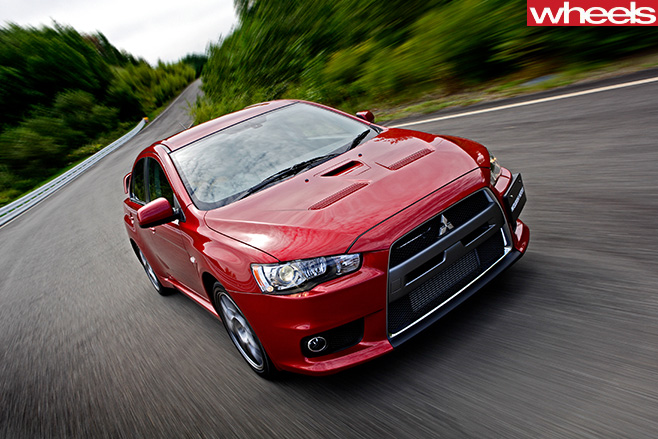
With Mitsubishi’s new 2.0-litre turbo four by now into the meaty middle of its rev range, the lunge to the redline is properly Evo-urgent. And there’s nothing soft about the SST’s upshift as the tacho needle kisses 7000rpm. The change is quick, the pressure of the Recaro against my back easing for only an instant.
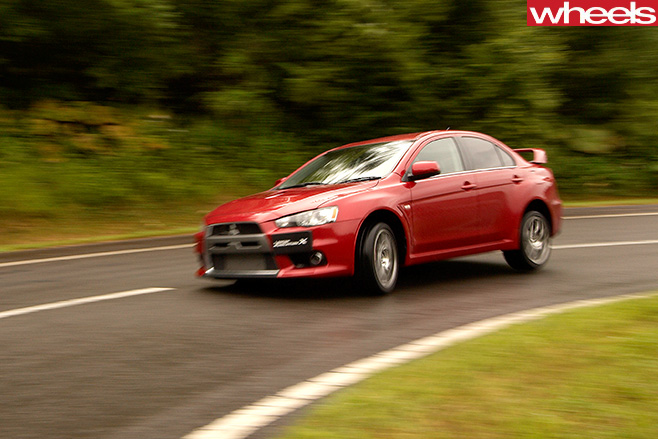
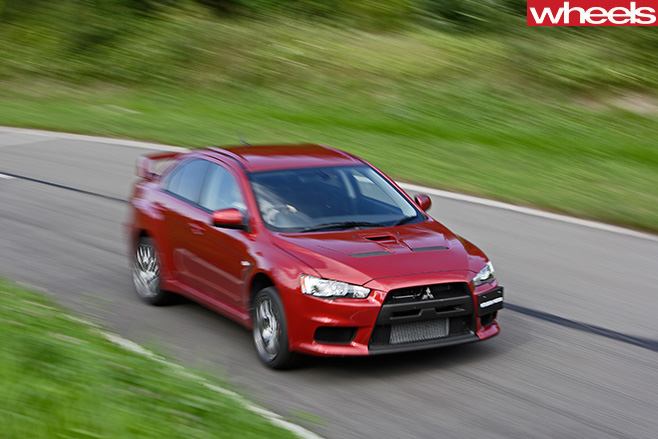
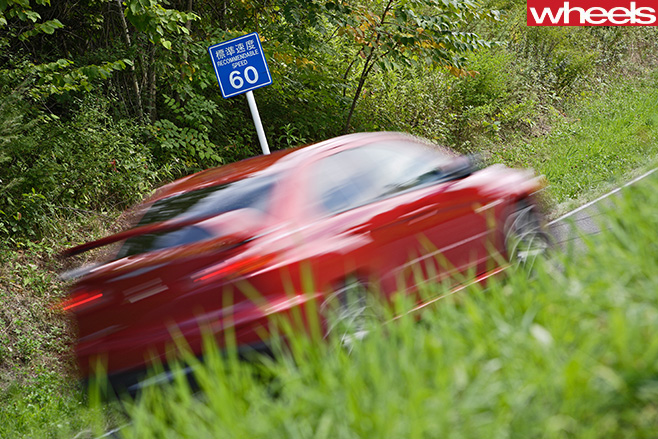
The short uphill straight that follows leads to a tight right. My hard brake application is accompanied by a series of perfect, computer- orchestrated downshifts. Just brilliant. A heel ’n’ toe expert couldn’t do any better.
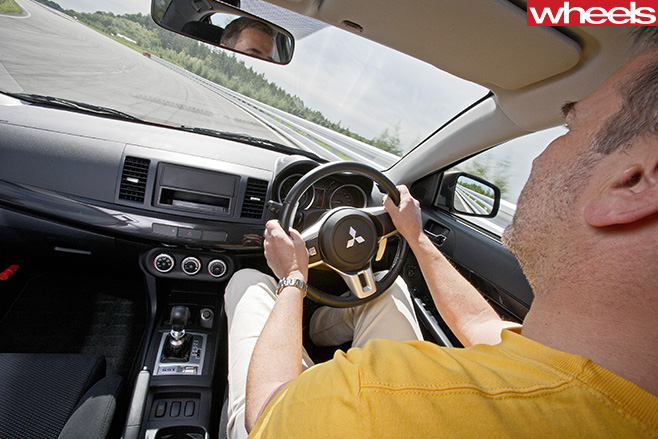
I keep the throttle nailed as the Evo bucks and skitters, adding to the collection of black smears on the rippled bitumen. In my peripheral vision, in the info panel between the instrument’s major dials, I can see the display flashing furiously. It’s telling me the car’s standard electronic stability program is working hard. Although I know the system is manipulating throttle and brakes to keep the Evo heading in the direction I want, the second-gear acceleration is smoothly ferocious.
The next section is tight and technical, a serpentine succession of uphill curves. Left, right, left, right, left. The last, at the crest of the climb, is awkwardly off camber. And the second left-hander has a sight line seemingly designed to tempt too-early throttle application.
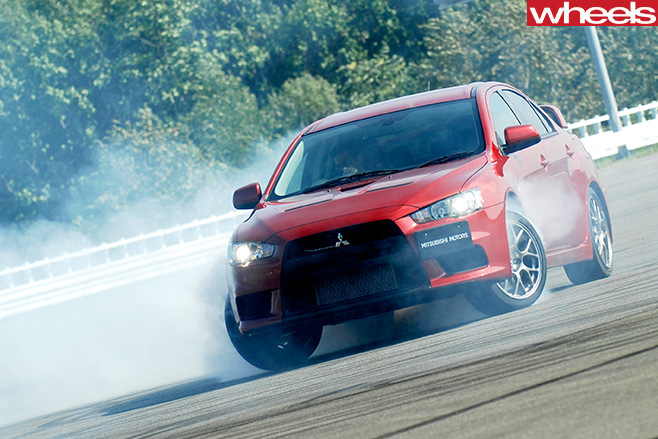
Mitsubishi labels its switchable ESP system ASC, for active stability control, and I haven’t touched the button at the right-hand end of the dash before starting this lap. One brief push disables the system’s authority over the throttle. I’ve tried that, and squealed sloppily – and slowly – through this challenging section. Get on the gas too early just once, and you lose momentum through all the remaining corners.
At the technical presentation in a function room at our hotel in Obihiro the previous night, we were told that the Evo X’s S-AWC system was worth 1.5 seconds on a 2.4km lap. S-AWC stands for super all-wheel control. It earns its ‘Super’ by adding ESP to the existing suite of electronically controlled technologies – ACD (active centre differential), AYC (active yaw-control rear differential) and ABS. Diagrams showing with and without steering-input traces for dry bitumen and packed-snow driving were produced to prove the system reduces the need for wheel twirling.

Out of the section’s final, off-camber corner, is the scary part of this track. It’s fast. And dangerous. This is a proving ground, not a racetrack, so there’s no run-off, no Armco. Instead, there are raised, grass-covered banks either side. We’ve been sternly told a 120km/h limit applies to this specific section. Later I learn a journalist from one of the earlier groups through this program crashed on this track – I’m betting it happened somewhere along here.
It snakes gently at first, inviting increasing pressure on the accelerator. Avoid the suspension-testing lumps on the left, early, and before you know it, you’re north of 150km/h.
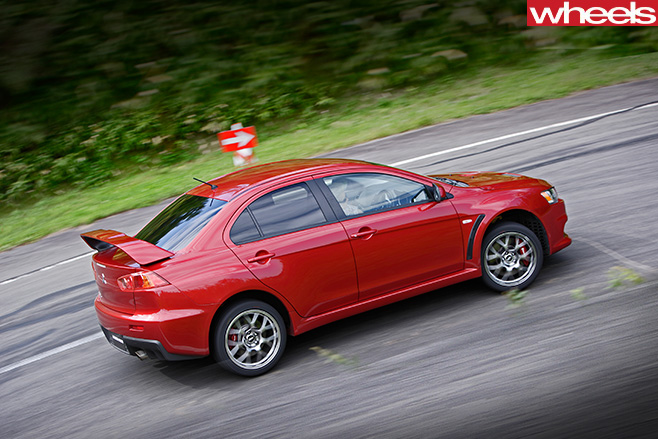
And now we’re heading for its nasty bit. It’s a quick left, slightly downhill in and a little uphill out. It’s reasonably comfortable at a around 130km/h, despite the unsettling series of waves in the track that the proving ground designers have installed here.
The Evo X I’m driving is equipped with Mitsubishi’s ‘High Performance’ option. The package includes forged BBS wheels instead of the standard Enkei rims, saving a little under one kilo per corner. Tyre size is the same for both BBS and Enkei wheels, at 245/40R18. Other key ingredients are Bilstein dampers and Eibach springs. On this track, which lacks the kind of harsh and informative impacts found on real roads, it’s hard to feel any difference between the optioned red Evo X
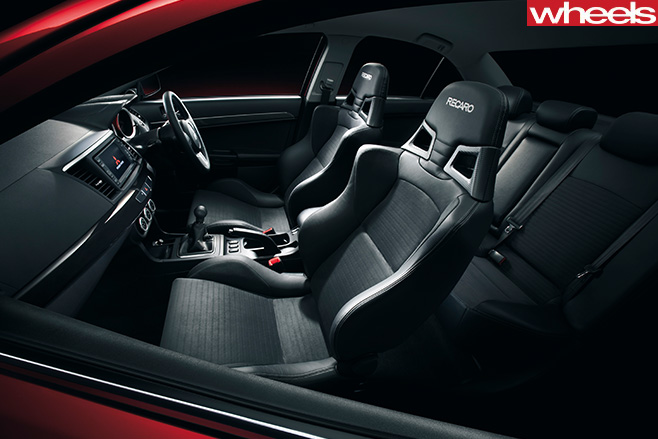
Likewise the brakes. We’re about to arrive at the corner that demands the most of the Evo’s left pedal. The road opens again after the lumpy left, but the speed gained here needs to be washed away smartly for a very tight left-hand hairpin.
While all Evo Xs are fitted with chunky Brembo brake calipers, the High Performance package also adds compound front discs. Although the same diameter as the standard one-piece iron items, their aluminium centres save more than one kilo per piece. Again I’m hard-pressed to feel any significant difference between the standard equipment and the optional discs.
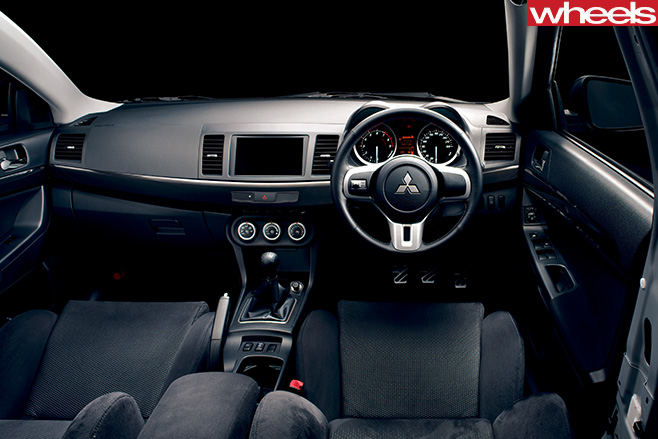
Running into this hairpin, the SST rips smartly down through the gears, giving me first for the exit. It’s closely followed by a short slalom through three close-packed descending second-gear corners, finished by a treacherous downhill right-hand hairpin.
Jabbing left, right, left with the steering, followed by a stab on the brakes for the following hairpin, is a severe test of stability. The Evo X is brilliantly neutral, even though you can sense the inclination of the road and the nose-down attitude of the car combining to unload the rear tyres.
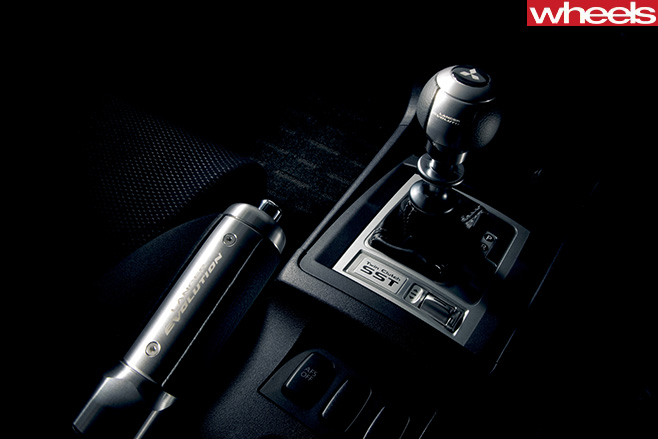
I leave the Evo X at the end of the queue of cars waiting for their next lap. Cool drinks are available from the nearby refreshment tent, so I choose a small bottle of Evian, find a folding chair in the shade, swallow a quenching slug of water, and start to make notes.
I look up to see another journalist is settling into the idling Evo X with SST and High Performance option package. The safety marshal cocks an ear to his radio, waves ‘Go’ to the first car in line, and it moves one place closer to its next lap. I wonder if the car’s new pilot will return as impressed by the car’s purposeful sophistication as I am right now?
How much will the Evo X cost?
Australian dollar prices of the Evo X will range between $60,000 and $70,000. While the line-up is still to be confirmed, Mitsubishi Australia has firm ideas on what it wants. The preferred plan is for a basic model that offers a choice between five-speed manual and six-speed SST transmissions, and an SST-only range-topper with the full set of mechanical and appearance upgrades. The most likely Australian on-sale date is early April next year, although there remains a slim chance of a March arrival.

SPECS
Mitsubishi Lancer Evo X
Body: Steel/aluminium, 4 doors, 5 seats
Drivetrain: front-engine (east west), all-wheel drive
Engine: 1998cc inline 4cyl, dohc, 16v, turbo
Power: 206kW @ 6500rpm
Torque: 422Nm @ 3500rpm
Transmission: 5-speed manual or 6-speed twin-clutch SST
Size (l/w/h): 4495/1810/1480mm
Wheelbase: 2650mm
Weight: 1520kg
0-100km/h: 4.9s man / 5.2s SST (claimed)
Price: $60,000 to $70,000
On sale: April 2008


